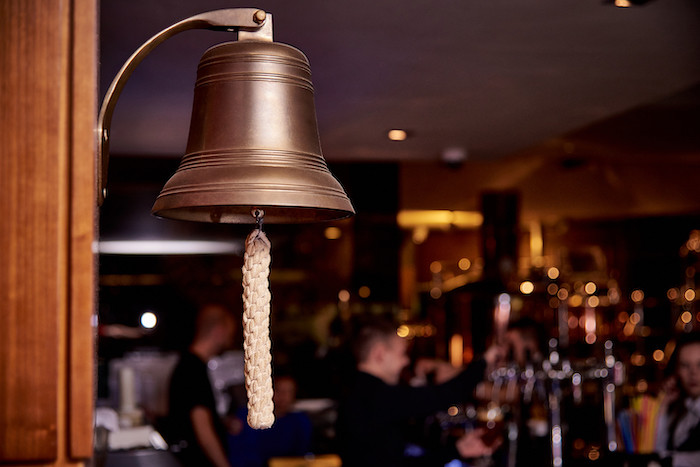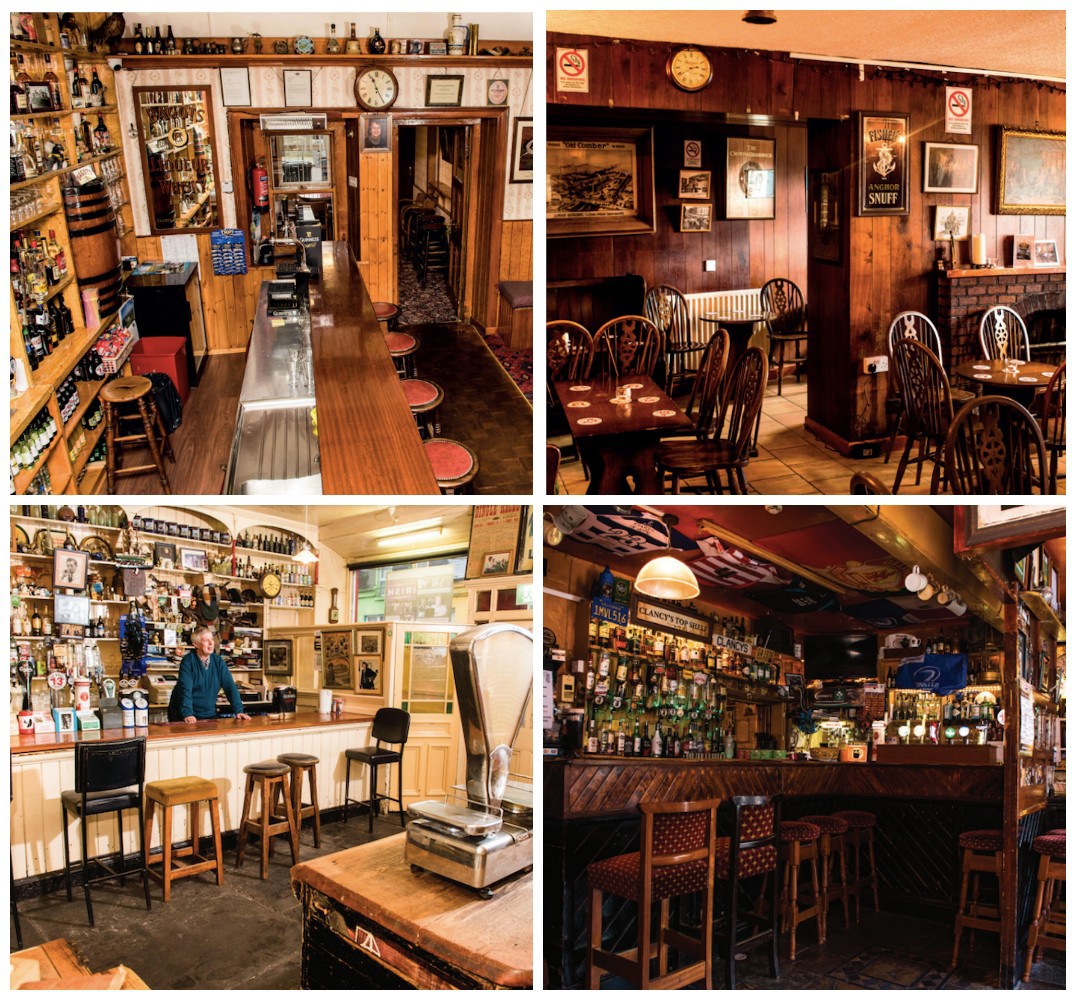
Sean Muldoon – formerly of The Dead Rabbit, The Merchant and soon to be the founder of Hazel & Apple – tracks the decline of the Irish pub culture that inspired his career
When I met Jimmy Neary he didn’t know me, but I knew of him. The octogenarian owner of fabled Irish pub Neary’s on Manhattan’s East 57th Street, was dressed in his signature suit and tie and was in high spirits. He was something of a legend among Irish pub owners, known for having as much character as the pub he owned. That day, he told me he opened his pub on St Patrick’s Day in 1957 and worked there daily until 10pm before driving home to New Jersey.
On my way to see Jimmy at Neary’s some years later, I was informed he had passed away at the age of 91. His absence was immediately noticeable upon entering the bar; the place felt soulless without him. I gazed around the room, absorbing the red leather banquettes and tables covered with checkered tablecloths. Once bustling with people, they now lay empty. I studied the photographs adorning the walls, many featuring Jimmy alongside the likes of Bill Clinton, Michael Bloomberg and Kathie Lee Gifford - all that remained of this storied establishment, it seemed, were the cherished memories of days gone by.
The Irish bartender at the bar said business had gone drastically downhill since Jimmy’s passing, and the bar was for sale. Knowing how much of his life Jimmy had poured into the place, it was disheartening to hear.
Unfortunately, the story of Neary’s is not unique; it is a trend happening not just in the US but throughout Ireland. According to a 2022 report by the Drinks Industry Group of Ireland (DIGI), there has been a 21% decline in Irish pubs since 2005, resulting in almost 2,000 pub closures. This news is shocking – Ireland’s traditional pubs are essential to the country’s identity, much like France’s cafes and Italy’s trattorias. According to a survey conducted by Fáilte Ireland, Ireland’s National Tourism Authority, 80% of all tourists to Ireland said the Irish pub was their main reason for visiting the country.
I can vividly recall the first time I visited an authentic Irish pub around 30 years ago. It was McCollum’s in Cushendall, in Ireland’s north east, and walking through the doors I felt like I had intruded on someone else’s house. Many rooms, including the kitchen, were filled with people enjoying each other’s company. Turf (Irish peat) was burning in the open fires, creating an intoxicating atmosphere that evoked a sense of old-time Ireland. A pianist jovially played an old-fashioned piano, just like in a Western movie, and was accompanied by an accordionist.
It left a lasting impression and inspired me to pursue a career in hospitality. Since that day, I have travelled the country in search of its finest pubs. Sadly, the stories of many of them I visited mirrored Neary’s: the main character retired or passed away, and the pub couldn’t recover without them. Consequently, the pub, which may have been around for a hundred or more years, was gone forever.
Lost gems
In County Donegal, on the north west coast of Ireland, sits Bundoran, a popular seaside resort favoured by surfers for its year-round swells. On the town’s main thoroughfare, appropriately called Main Street, is Brennan’s Criterion Bar, a gem of a pub that opened its doors in 1900 and remained in the same family since. The most recent owners, Patricia and Nan, were two elderly sisters and grandchildren of the original owners. Patricia and Nan grew up in the pub and lived above it until a few years back. They had a no-nonsense approach to running the place; there were no TVs or WiFi, and singing, music and swearing were forbidden. People went to Brennan’s to chat and interact with one another instead of looking at their phones.
After Nan passed away in 2017, Patricia was left to run the place alone. I visited her a few years ago. She was an endearing lady who made everyone feel welcome. She demonstrated her affection for the bar by keeping everything spotless - from the floors to the tables, countertops, mirrors, glasses and beer pumps. During our conversation, I sensed she was lonely and missed her sister dearly. So, when I heard that she officially retired a few months after my visit, I wasn’t surprised. The pub has remained shuttered ever since, marking the end of an extraordinary chapter in Bundoran’s history.
One of my all-time favourites is Curran’s in Dingle, County Kerry. The current owner, James Curran’s great-great-grandfather, opened this pub in 1871, and a member of the Curran family has stood behind the bar ever since. Curran’s is a pub that has barely changed in over 150 years. It is a single room with two counters. On one side, groceries, dry goods and clothing are sold. And on the other side is the bar. Bric-a-brac, such as an antique diver helmet in the window, and memorabilia, such as a signed photograph of the actor Robert Mitchum, hang everywhere.
But there is no guarantee that Curran’s will be able to remain open in its present form. When I asked James if he feared change, he shrugged: “I’ll work in this pub until I die, and I don’t care what happens afterward. I promised my father on his deathbed that I would keep the pub going, and I’ll be satisfied knowing I kept my word.’

The 2022 DIGI report adds that pub closures are not solely due to operators’ retirement or death. Other reasons, it adds, include “regulatory changes, underinvestment in public transport, which leaves much of rural Ireland disconnected, population change and distribution, evolving attitudes and lifestyle changes, economic pressures, and an increasingly challenging trading environment”.
Ger Clancy, the owner of Clancy’s pub in Athy, County Kildare, sheds more light on this. Athy is a tiny town located near the centre of Ireland that is best known as the birthplace of Ernest Shackleton, the renowned Antarctic explorer. Ger’s family has owned Clancy’s since before the outbreak of the Second World War, and he works there every day. Regarded as one of the best music pubs in eastern Ireland, the pub has hosted Ireland’s longest-running free music session since 1966. When I met Ger there, he gave me a tour. I was very impressed until he took me outside and showed me the nightclub and cocktail bar he had recently added.
Sensing my dismay, Ger quickly explained that the younger generation replacing the old weren’t as interested in traditional pubs. He cited “stricter drink driving laws and enforcement, combined with the absence of public transport and limited taxi services” as also to blame. “Now, I must rely predominantly on locals and the younger crowd wants loud music, fun and cocktails, and if I don’t offer that, I’ll have to shut the doors.”
Ronan Collins, a Belfast-based drinks consultant, says the impact of Covid, inflation leading to higher prices, more people working from home, have all played their part, not forgetting the influence of the internet and mobile phones. “Years ago, people went to the pub to meet people. Now, they use dating apps. People went to the pub for entertainment, but now, with the availability of online streaming services, they have other forms of entertainment to choose from. Pubs were also places where locals gathered and discussed recent events or sports matches. Nowadays, everyone stays home and communicates through texts.”
Rural pubs
A short taxi ride from Belfast City, The Crown & Shamrock Inn is a rare example of an old-style rural Irish pub. Established in 1872, it operated as a grocery store and a resting stop for stagecoaches (the stables still stand today). Since the 1930s, the pub has been under the same family’s ownership. A few years ago, I had the pleasure of meeting the two sisters who owned it: Frankie McAlinden and Rosemary O’Boyle. Inside, the pub had a cozy cottage-like feel with a tall bar counter and several sparsely decorated rooms. There was no background music or hot food available. Frankie mentioned that she and her sister had just sold the pub to her son, Aidan.
I spoke to Aidan about the changes he’d made: "When I took over the pub, it was primarily a men’s drinking bar that seated about 70 people. I turned the storeroom into a walled beer garden with a retractable roof, roughly doubling the capacity. I added a large TV, a jukebox and poker machines out the back and offered live music on Fridays and Saturdays. The year before I bought the bar, the turnover was under £100K. Last year, it was £700K; this year, I plan to do £1m."
When I asked friends of mine what they thought of Aidan’s changes, they understood them, but didn’t like them: “It doesn’t feel like an Irish pub anymore. The older guys who would have sat at the end of the bar on a Friday or Saturday night were part of the character of the place. But they have long since gone, and a younger brigade, which isn’t afraid to spend money, has replaced them. We were there on Saturday night last week, and a doorman handed out plastic cups to punters as they left. For both of us, that said it all: a doorman at the Crown and Shamrock!’
Evidently, there has been a shift in how people in Ireland socialise, and the traditional motivations for visiting pubs are no longer relevant. The pubs most affected are those that have failed to adapt to the evolving demands of the public. In contrast, those pubs that have adapted have often done so by sacrificing the unique qualities that made the pub special in the first place. Visiting these historical pubs soon is a must, as many may not be around, at least in their original form, for much longer.


